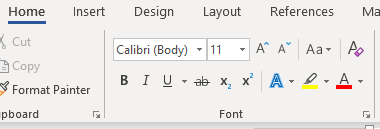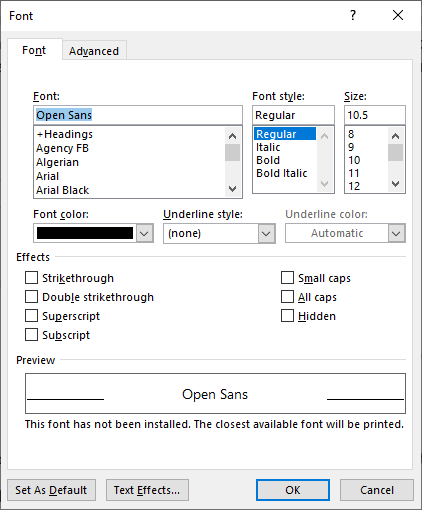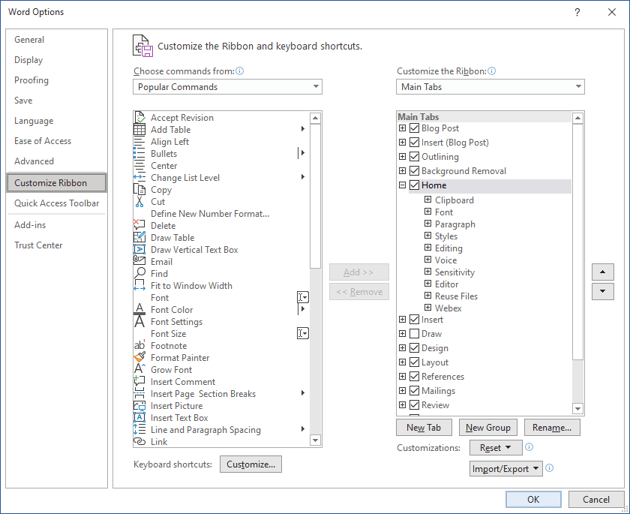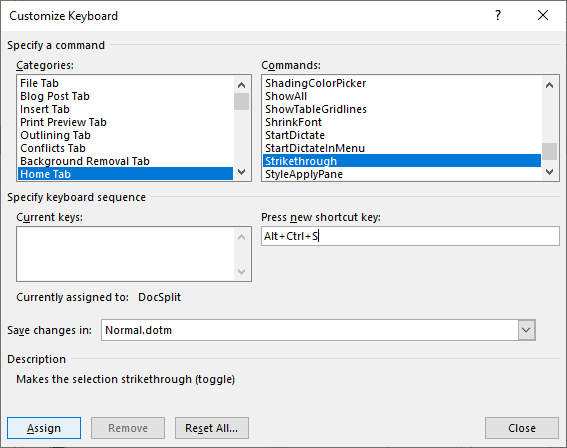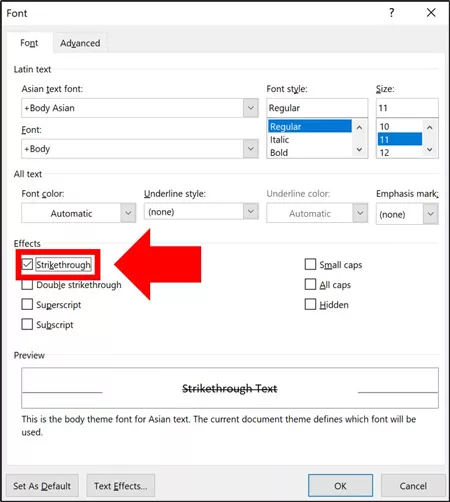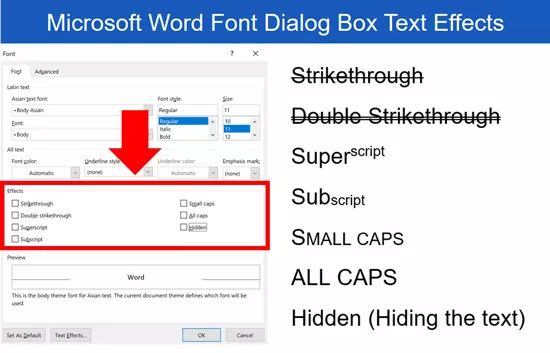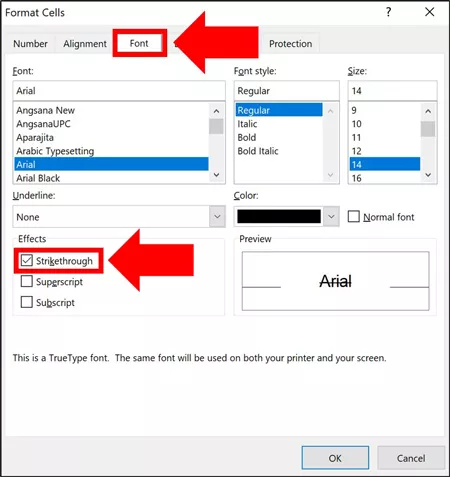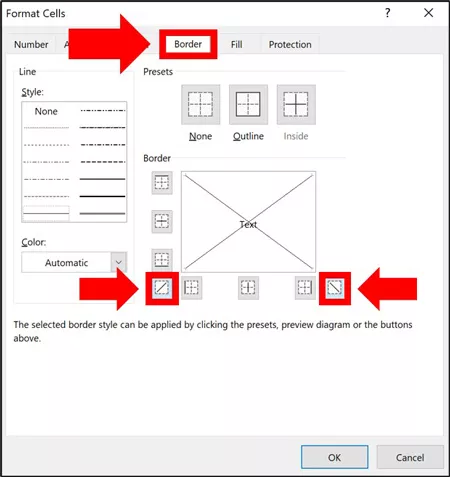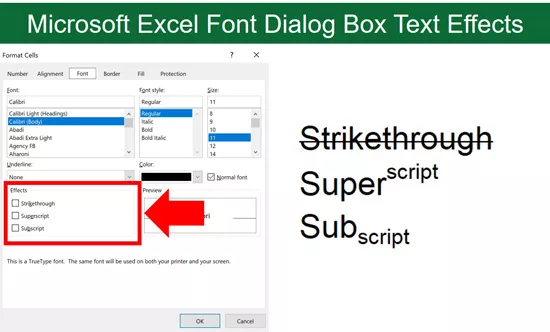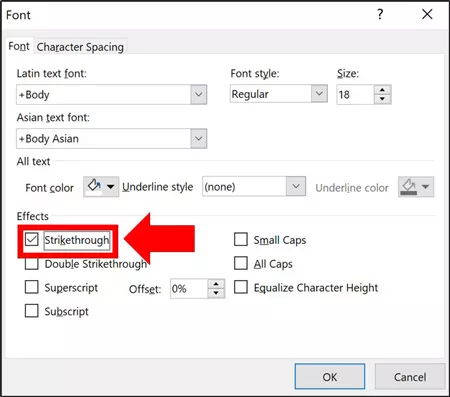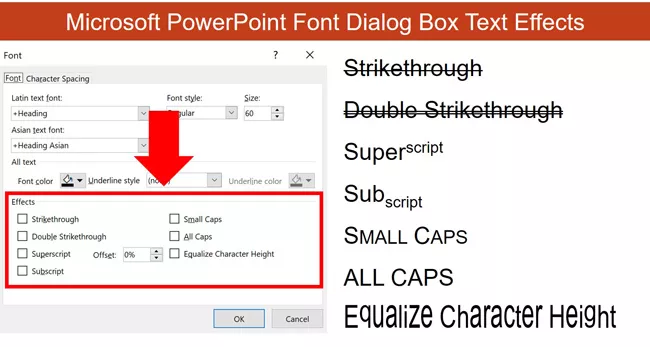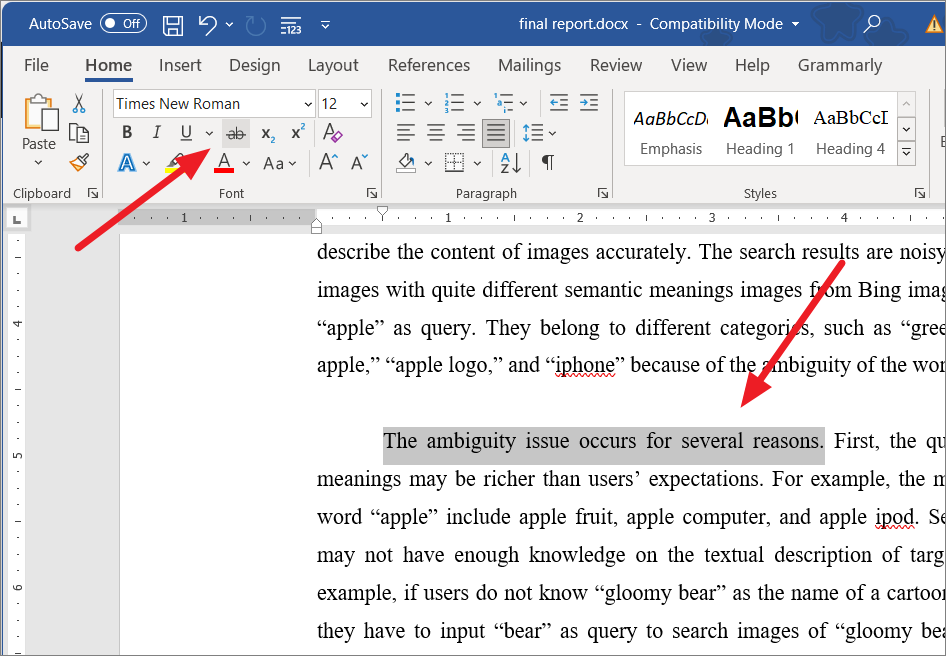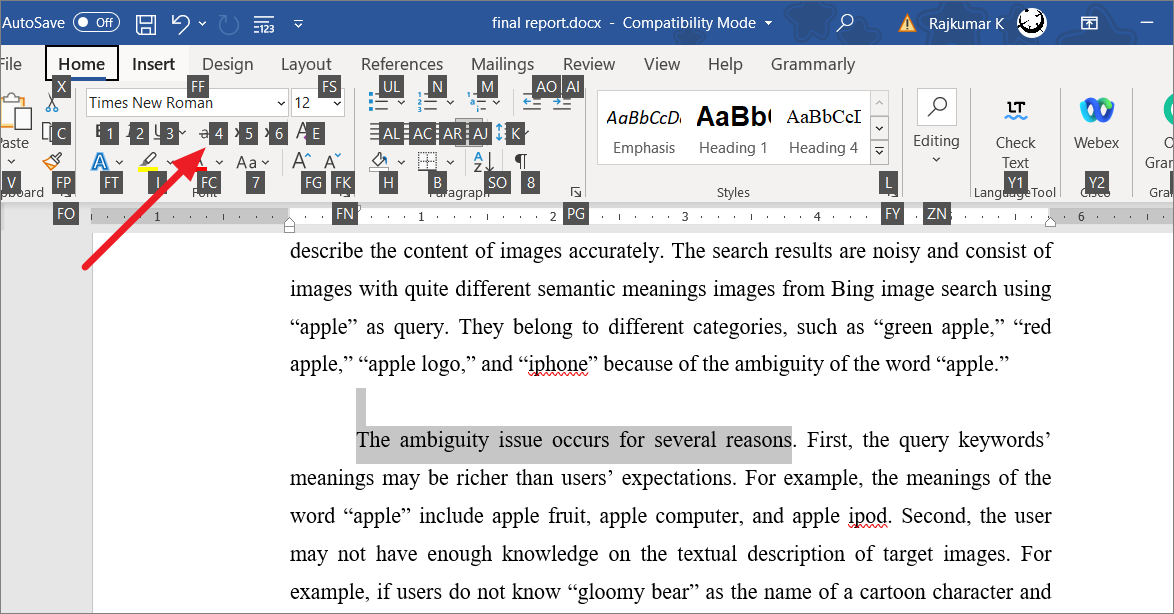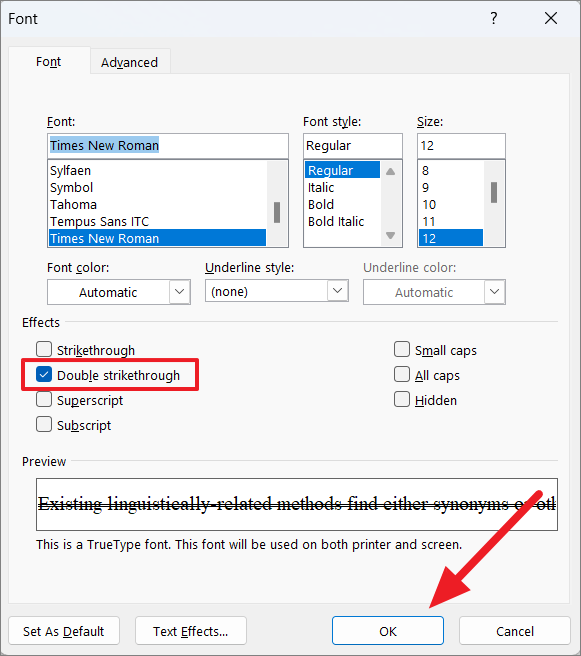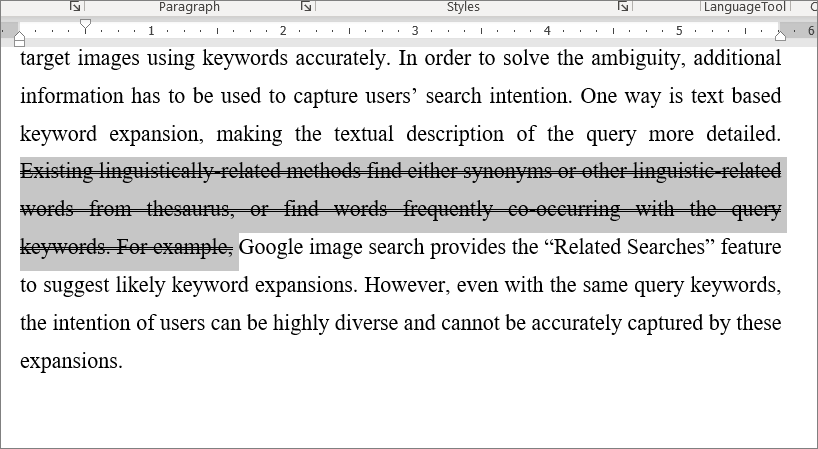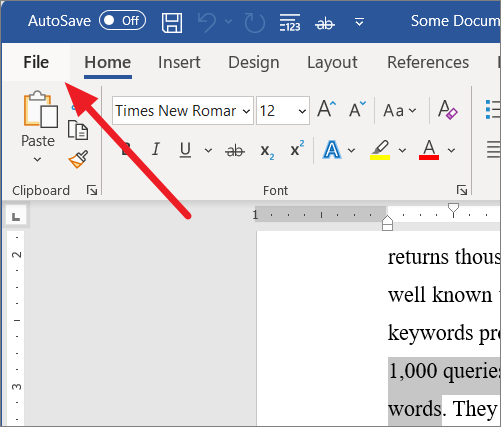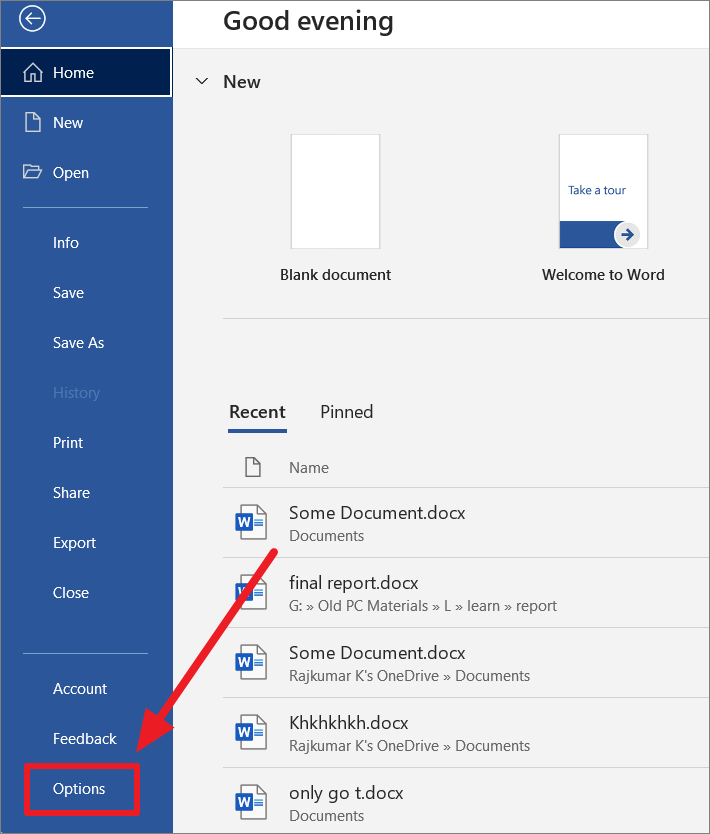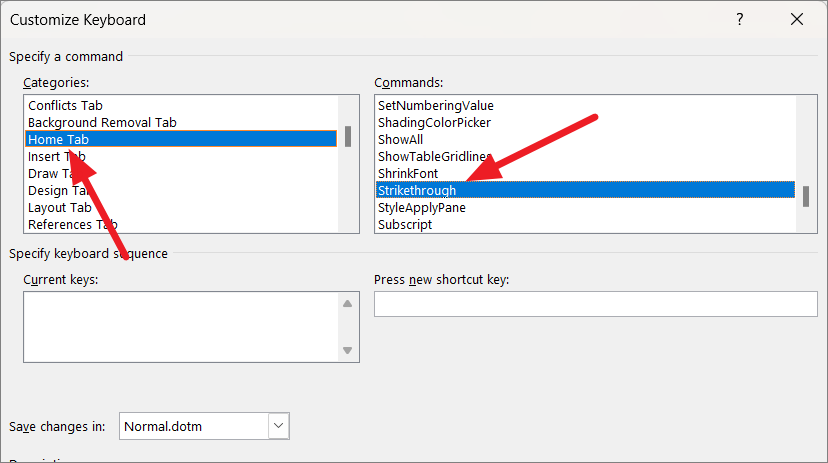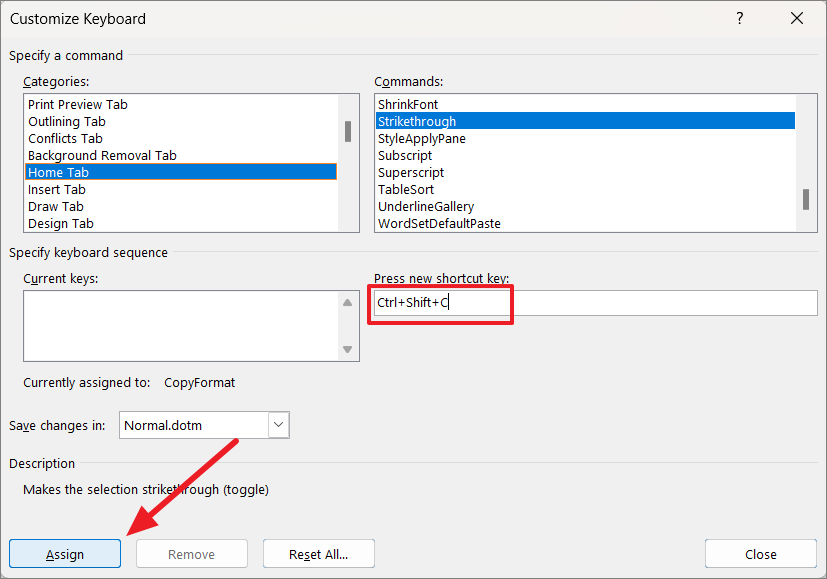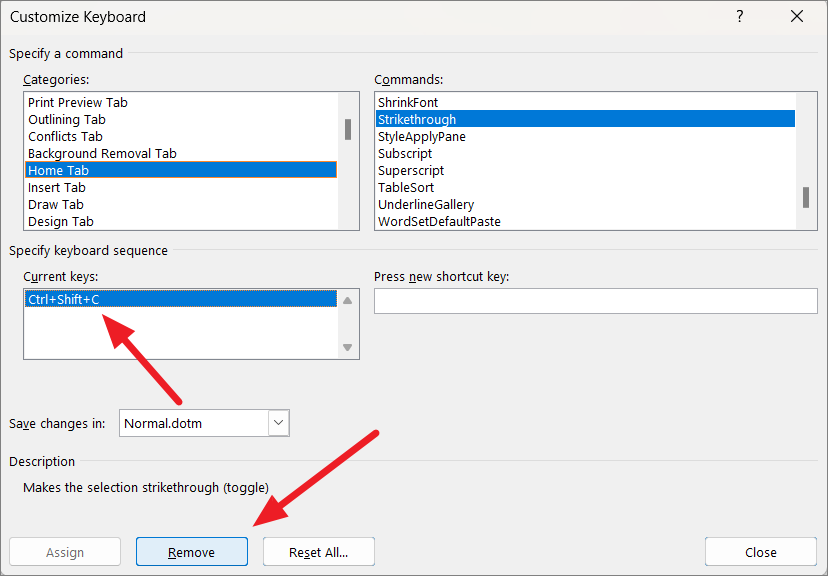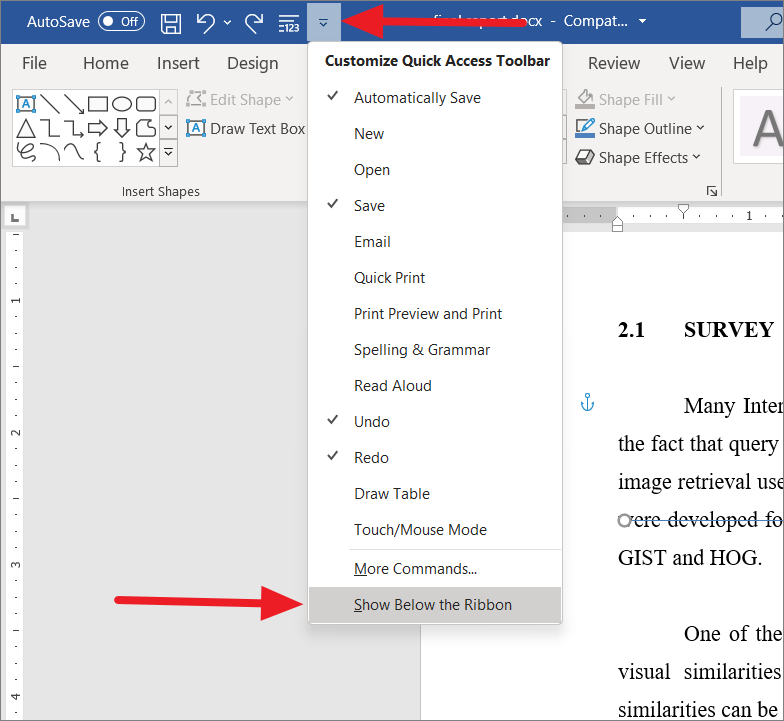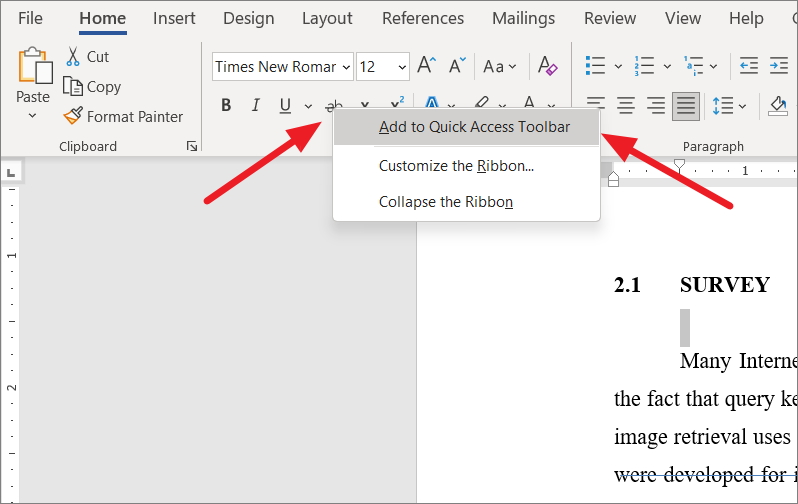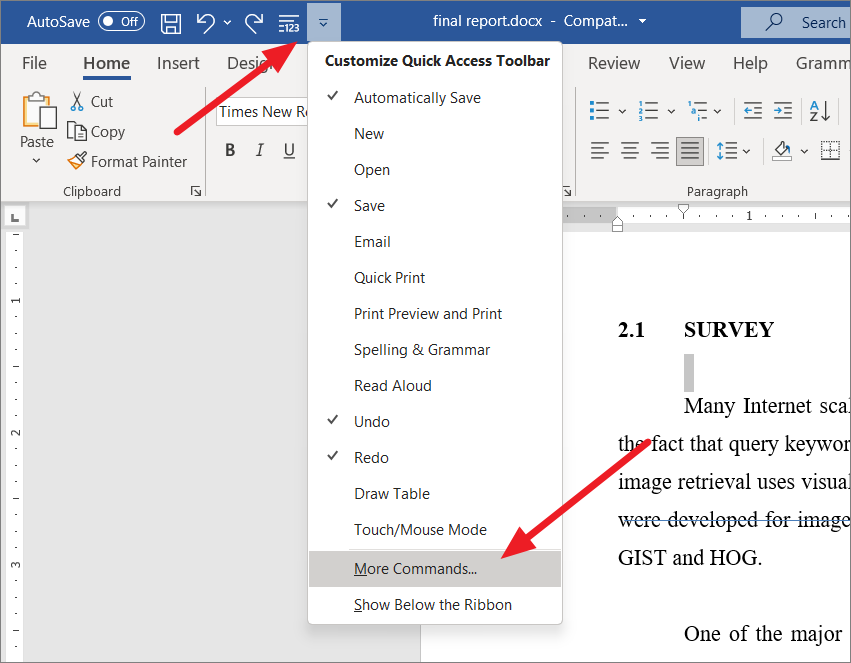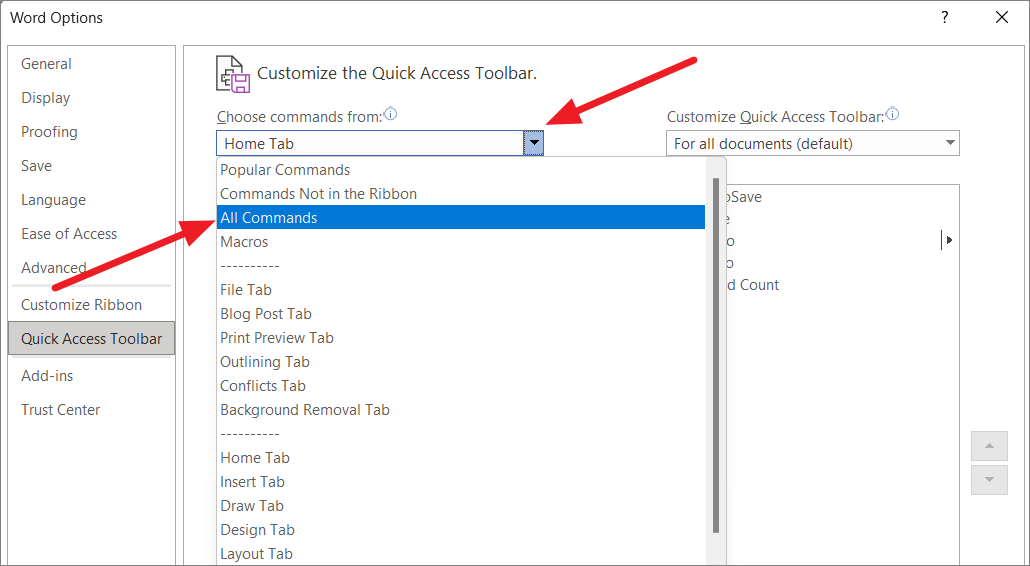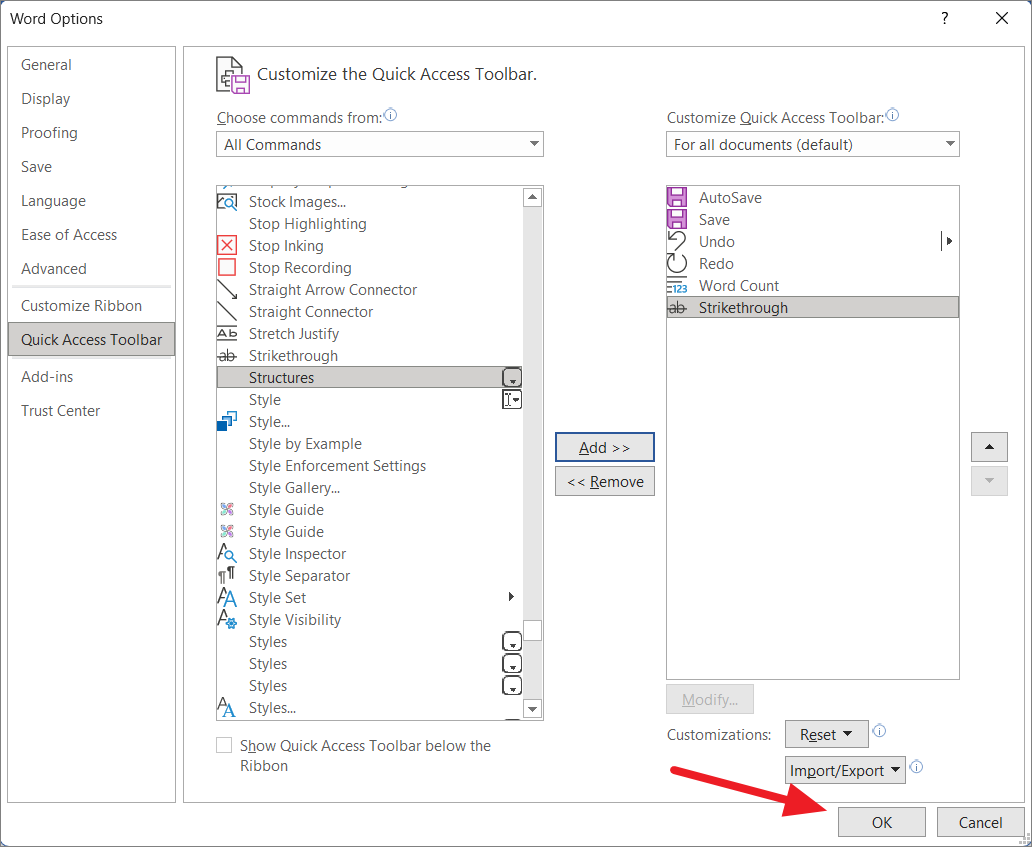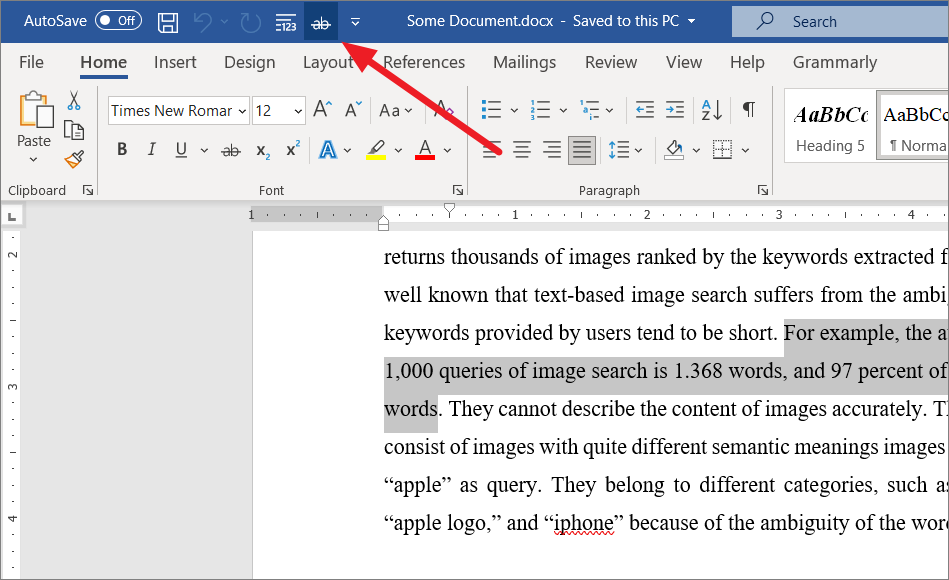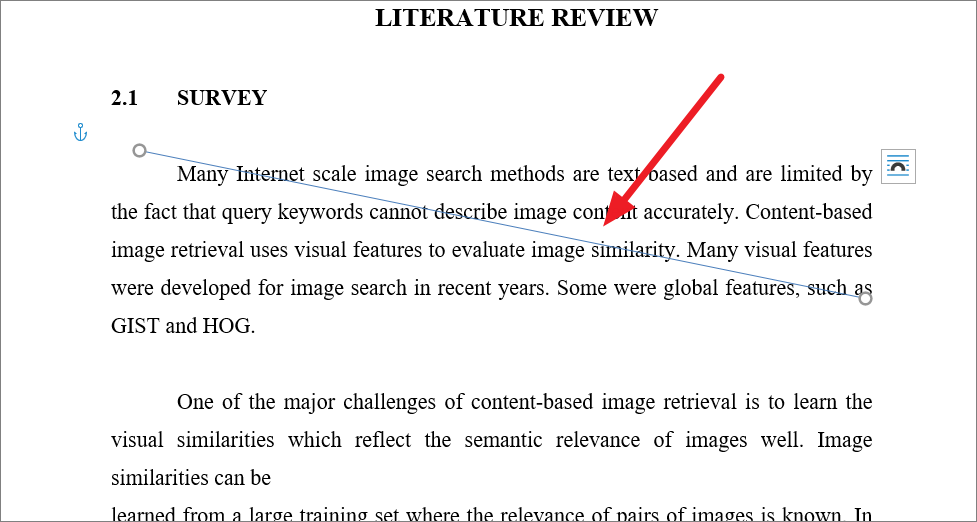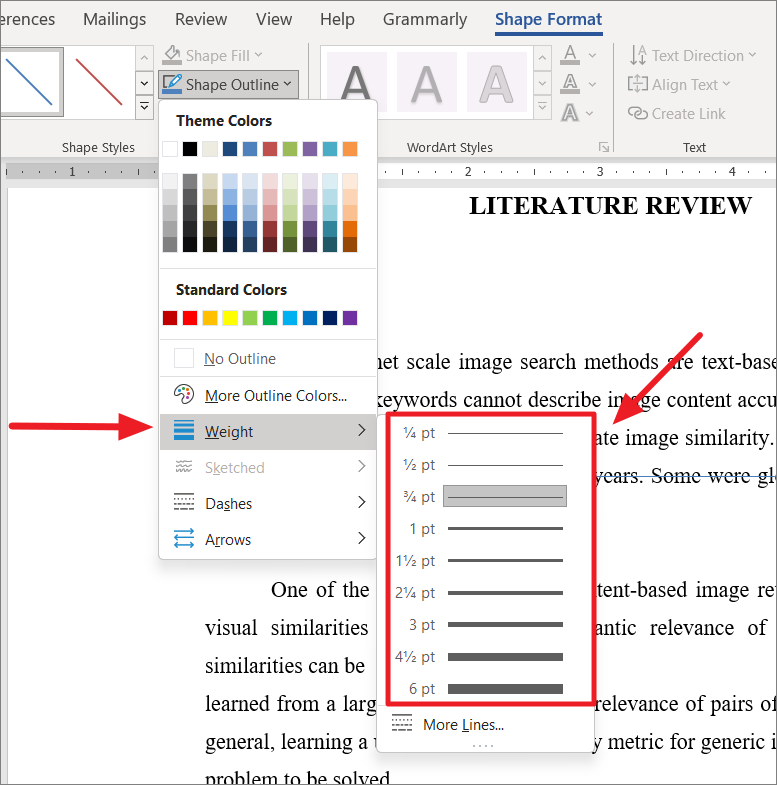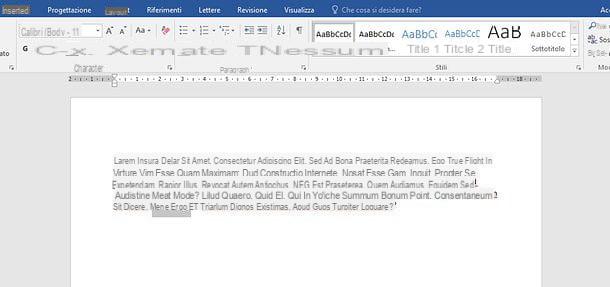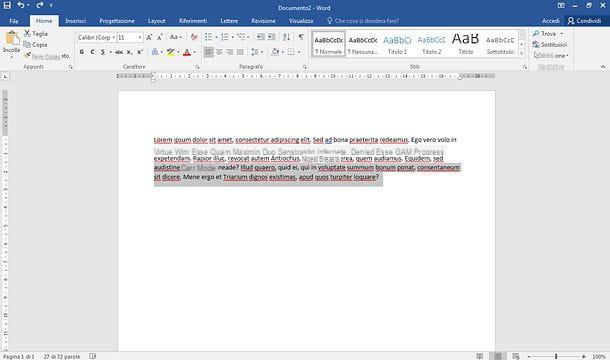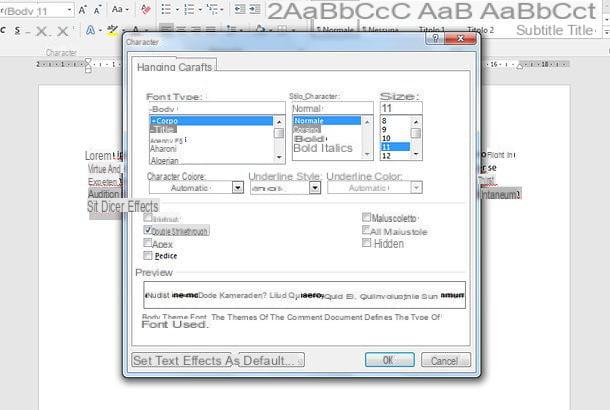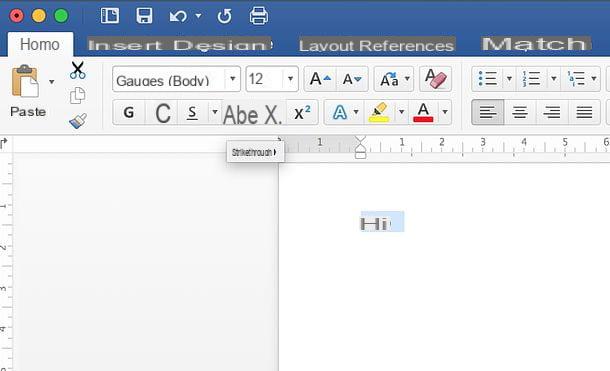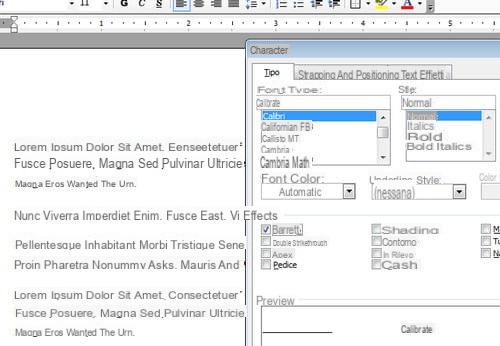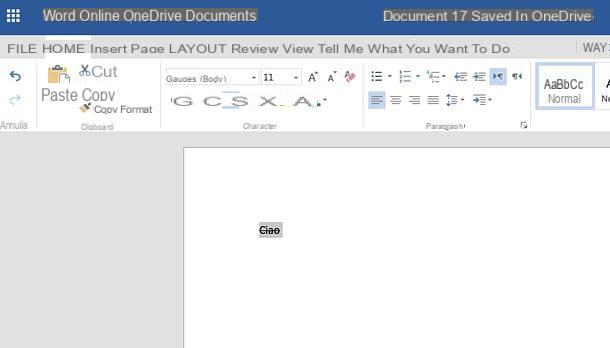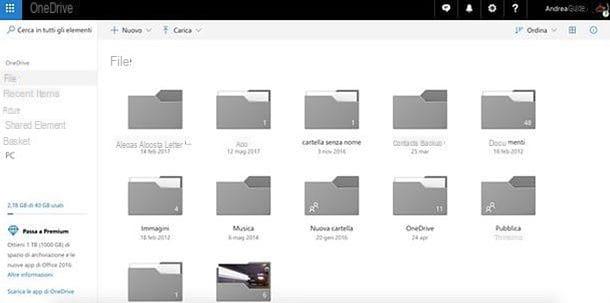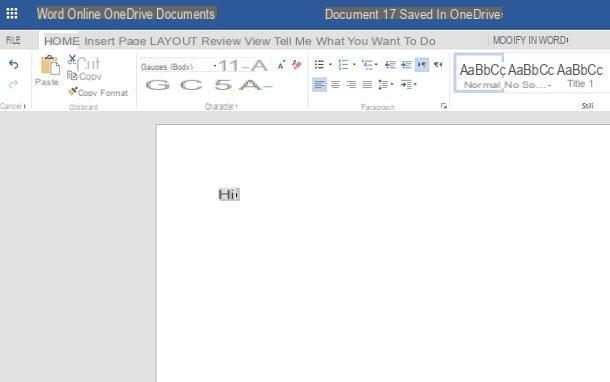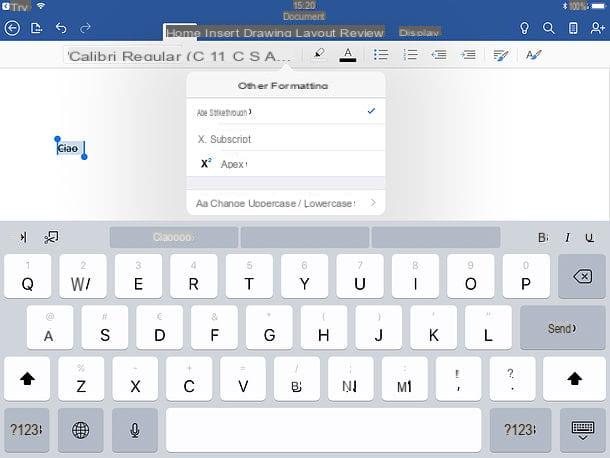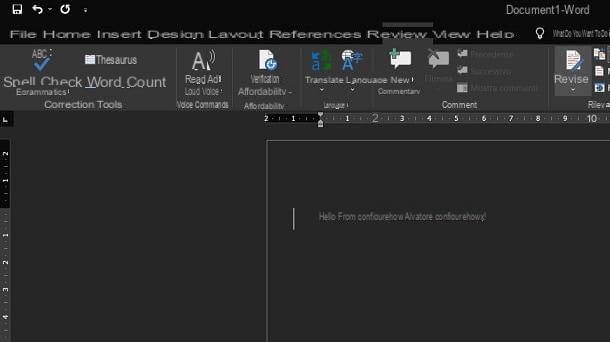Download Article
Download Article
Want to cross out words, letters, or entire sentences in Microsoft Word? We’ll show you how to use strikethrough to cross out any text in your Microsoft Word document using a computer, Android, iPhone, iPad, or Windows tablet.
Things You Should Know
- The strikethrough option is located in the Home tab at the top of Word.
- You can apply a double-line strikethrough using the Font panel’s additional options.
- To remove a strikethrough, highlight the text and click the strikethrough icon. Alternatively, select ‘Clear Formatting’ to remove it.
-
1
Highlight the text you want to strike out. You can do this by clicking and dragging the mouse cursor over the word or phrase.
- Although there is no keyboard shortcut for striking through text, it’ll only take a few seconds to apply the formatting.
-
2
Click the Home tab. If you’re not already on the Home tab, you’ll need to click Home at the top of Word to go there now.
Advertisement
-
3
Click the strikethrough icon. This icon looks like «
ab
» (or «
abc
» in some versions) with a horizontal line through both letters. You’ll see it up near the rest of your font options, such as the options to make words bold and italic. Clicking this icon will cross out all selected text.
- To remove the strikethrough effect, highlight the word or phrase again, and then click the ab icon.
-
4
Apply double-line strikethrough (optional). If you want to cross out the selected word or phrase with two lines instead of one, you can use the double-line strikethrough effect.[1]
Here’s how:- With the word or phrase highlighted, click the small down-arrow on the «Font» panel at the top of the screen.
- Check the box next to «Double strikethrough.»
- Click OK.
Advertisement
-
1
Select the text you want to strike out. To do this, just tap and hold one of the words you want to cross out, and then drag either side of the selection bars until all of the desired text is highlighted.
-
2
Tap the strikethrough icon (Android and Windows tablets only). If you see an icon that has lowercase «
ab
» with a horizontal line crossing through it, you can tap that icon to immediately strike through the selected text. If not, skip to the next step.
-
3
Tap the text formatting icon. It’s the icon of a capital «A» that has three horizontal dots beneath it.[2]
You’ll see this option at the top of the screen if you didn’t see a crossed-out «ab
» icon.
-
4
Tap Strikethrough. This crosses out the selected text.
- If you want to remove the strikethrough effect, select the text again, and then tap the ab icon (if you see it) or tap the text formatting icon and select Clear Formatting.
Advertisement
Ask a Question
200 characters left
Include your email address to get a message when this question is answered.
Submit
Advertisement
Video
Thanks for submitting a tip for review!
About This Article
Article SummaryX
1. Highlight the word or phrase with your mouse cursor.
2. Click the Home tab.
3. Click the icon of a crossed-out «ab.»
Did this summary help you?
Thanks to all authors for creating a page that has been read 395,619 times.
Is this article up to date?
Apply or Remove Strikethrough Using Shortcuts in Word
by Avantix Learning Team | Updated March 14, 2021
Applies to: Microsoft® Word® 2010, 2013, 2016, 2019 and 365 (Windows)
You can apply strikethrough to text in Word to cross out or create a line through text. This can be effective to show that something has been removed or deleted. Although you can use Strikethrough on the Home tab in the Ribbon or use the Font dialog box, you can also write your own Strikethrough keyboard shortcut in Microsoft Word.
Recommended article: How to Insert a Line in Word (3+ Ways)
Do you want to learn more about Microsoft Word? Check out our virtual classroom or live classroom Word courses >
What is strikethrough?
Strikethrough is a character format that can be applied to text where a line appears through the selected text. Because it’s a format, it can be removed easily. The most common way to apply strikethrough is to select the text and then click Strikethrough in the Font group on the Home tab in the Ribbon (as an ab with a line through it):
You can also press Alt > H > 4 (Alt, then H and then 4).
Using keyboard shortcuts to access the Font dialog box
To access the Font dialog box using a keyboard shortcut and then apply Strikethrough:
- Select the text you want to strikethrough.
- Press Ctrl + D. The Font dialog box appears.
- Press Alt + K to select Strikethrough (note that k is the underlined letter).
- Press Enter.
Below is the Font dialog box:
Adding Strikethrough to the Quick Access Toolbar
You can also add Strikethrough to the Quick Access Toolbar and then access it using Alt.
It’s usually easier to work with the Quick Access Toolbar if you display it below the Ribbon. If the Quick Access Toolbar is above the Ribbon, click the down arrow to the right of the Quick Access Toolbar and select Show Below the Ribbon from the drop-down menu.
To add Strikethrough to the Quick Access Toolbar:
- Right-click Strikethrough in the Font group on the Home tab in the Ribbon. A drop-down menu appears.
- Select Add to Quick Access Toolbar.
- Click the down arrow to the right of the Quick Access Toolbar and select More commands from the drop-down menu. The Options dialog box appears.
- In the list of commands on the right side of the dialog box, click Strikethrough.
- Click the up arrow that appears on the far right until the button appears at the top of the list (you can move it to the second position, third position, etc.).
- Click OK.
- Press Alt. Key tips appear on the Quick Access Toolbar. If you have moved Strikethrough to the first position, press 1 to apply it. If you have moved Strikethrough to the second position, press 2 to apply it and so on. These are sequential shortcuts, so press Alt and then the number.
Creating a custom keyboard shortcut
You can also create your own keyboard shortcuts in Microsoft Word by customizing the keyboard. This is a great way to create a strikethrough shortcut.
In Microsoft Word (unlike Excel and PowerPoint), you can use File Options to customize your keyboard (note the Customize command at the bottom of the Customize Ribbon category):
To create your own keyboard shortcut for Strikethrough using File Options:
- Click the File tab in the Ribbon.
- Click Options. A dialog box appears.
- In the left panel, click Customize Ribbon.
- In the panel on the right, beside Keyboard Shortcuts, click Customize. The Customize Keyboard dialog box appears.
- Under Categories, click Home Tab.
- Under Commands, click Strikethrough.
- Click in the box below Press new shortcut key.
- Press the keys you want to assign (at the same time). You can press Ctrl + Alt + a letter so that it is less likely to have a conflict with a previously assigned shortcut. You don’t want to reassign common shortcuts such as Ctrl + P. In this case, you could press Ctrl + Alt + S.
- Click Assign.
- Beside Save changes in, select Normal (to save the changes globally). Normal is the default global template.
- Click Close.
- Click OK in the Options dialog box.
Now you can select text and use the keyboard shortcut you assigned (such as Ctrl + Alt + S) to apply strikethrough. Strikethrough is a toggle, so you can use the same shortcut to remove strikethrough.
Below is the Customize Keyboard dialog box:
You can assign keyboard shortcuts to many other commands using this strategy.
Because the keyboard assignments are typically saved in the Normal template, when you exit Word, be sure to save the Normal template when prompted.
Subscribe to get more articles like this one
Did you find this article helpful? If you would like to receive new articles, join our email list.
More resources
How to Generate Random Text in Word
How to Hide Comments in Word (or Display Them)
How to Insert Greek Letters or Symbols in Word (6 Ways)
How to Superscript or Subscript in Microsoft Word (with Shortcuts)
3 Strikethrough Shortcuts in Excel to Cross Out Text or Values in Cells
Related courses
Microsoft Word: Intermediate / Advanced
Microsoft Excel: Intermediate / Advanced
Microsoft PowerPoint: Intermediate / Advanced
Microsoft Word: Long Documents Master Class
Microsoft Word: Styles, Templates and Tables of Contents
Microsoft Word: Designing Dynamic Word Documents Using Fields
VIEW MORE COURSES >
Our instructor-led courses are delivered in virtual classroom format or at our downtown Toronto location at 18 King Street East, Suite 1400, Toronto, Ontario, Canada (some in-person classroom courses may also be delivered at an alternate downtown Toronto location). Contact us at info@avantixlearning.ca if you’d like to arrange custom instructor-led virtual classroom or onsite training on a date that’s convenient for you.
Copyright 2023 Avantix® Learning
Microsoft, the Microsoft logo, Microsoft Office and related Microsoft applications and logos are registered trademarks of Microsoft Corporation in Canada, US and other countries. All other trademarks are the property of the registered owners.
Avantix Learning |18 King Street East, Suite 1400, Toronto, Ontario, Canada M5C 1C4 | Contact us at info@avantixlearning.ca
In this post you’ll learn how to strikethrough text (or cross out text) in Microsoft Word, Excel, and PowerPoint.
Each software works a little bit differently: PowerPoint and Word both have the strikethrough command available in the Ribbon. In addition, for the Microsoft Office programs, if you navigate through the Font dialog box (or Format Cells dialog box in Excel) you get a bunch of other useful text effect options.
If you want to strikethrough text outside of the Microsoft Office suite (like inside a YouTube comment), you can check out the post by Online Sense here.
How to strikethrough text in Word
There are two ways you can strikethrough text in Microsoft Word.
Neither one is better nor worse, it just depends on the number of features you want to get access to. The Font dialog box method below gives you the most text formatting effects.
1. Use the strikethrough command in the Ribbon
To use the Ribbon in Word to create the strikethrough effect, simply:
- Select the text you want to cross out
- Navigate to the Home tab
- Click the Strikethrough command
Note: If you are using the strikethrough effect to show edits and make comments, a better method is to use Microsoft Word’s built-in Comments command. To learn how to add comments in Word, read our guide here.
2. Use the Font dialog box strikethrough command
The fastest way to open the Font dialog box in Microsoft Word is with the Ctrl+D keyboard shortcut. If you don’t want to memorize a new shortcut, you can alternatively open it from the Home tab.
- Select the text you want to cross out
- Go to the Home tab
- Click the downward facing arrow in the Font group
- Select Strikethrough (pictured below)
- Click OK
As pictured below, you have a variety of additional text formatting options inside the Font dialog box. To see an example of these different text features, read below.
3. Text effect options in Word
Checking the box creates the crossed out text effect. To remove the text effect, simply open the Font dialog box again and un-check the box.
These options in Word are quite different than what you will find if you migrate to Google docs. To expand your knowledge and learn how to strikethrough on Google docs, read our guide here.
The advantage of using the Font dialog box is that it gives you seven other text effect options (as you can see in the picture above). Here are the keyboard shortcuts for each one:
- Strikethrough: Alt + K
- Double Strikethrough: Alt+L
- Superscript: Alt+P
- Subscript: Alt+B
- Small caps: Alt+M
- All caps: Alt+A
- Hidden: Alt+H
To expand your knowledge and learn how to use the Font dialog box to underline words only and change the underline color of your underline, read our guide here.
Note: To learn all the strikethrough shortcuts for Word, Excel, and PowerPoint, see our guide here.
How to do a strikethrough in Excel
There are 4 different ways you can strikeout text in Excel using the Format Cells dialog box.
The reason that there are so many options in Excel is that you can leverage cell borders to create the diagonal cross-out text effect (described below). But first, let’s start with the basics.
1. Strikethrough text in Excel
The fastest way to create the strikeout text effect in Excel is to use the Ctrl+5 keyboard shortcut. Simply select your text (or the cell with your text in it) and hit Ctrl+5.
Hitting the Ctrl+5 shortcut once applies the text effect. Hitting the shortcut a second time removes the text effect.
If you don’t want to memorize the shortcut, you can also access the strikethrough command through the Format Cells dialog box.
- Select the cells you want to strikeout in your spreadsheet
- Select the Home tab
- Click the downward facing arrow in the Font group
- On the Font tab select Strikethrough (see image below)
- Click OK
Just like any other program, applying the effect once strikes out your text. Applying the effect a second time removes it.
Also please note that the Format Cells dialog box is where you access the Superscript and Subscript commands. To learn more about this, read our guide here.
2. How to diagonally strikethrough text in Excel
In this example, we are going to create a diagonal strikethrough and use the Format Cells keyboard shortcut.
- Select the cells you want to strikeout in your spreadsheet
- Hit Ctrl + 1 to open the Format Cells dialog box (or use the Ribbon command discussed above)
- Navigate to the Border tab
- Add the diagonal lines (picture below )
- Click OK
Applying a diagonal border once applies the effect to your cell. Applying it a second time removes it.
So if you later want to remove this diagonal crossed out effect, simply navigate back to the Format Cells dialog box (Ctrl + 1), navigate to the Border section and re-apply the diagonal cell borders.
3. Other text effect options in Excel
Inside the Format Cells dialog box in Excel, there are 3 other text effects you can apply to your text (as pictured above):
- Strikethrough: Alt + K
- Superscript: Alt + E
- Subscript: Alt + B
To expand your knowledge and learn how to copy and paste formatting in Excel, see the section on the Paste Special shortcut inside our guide here.
How to strikethrough text in PowerPoint
There are two different ways to cross out text in PowerPoint.
You can either use the strikethrough command in the Ribbon or use the Font dialog box. Which method is best depends on how many text effect options you want to apply.
1. Use the strikethrough command in the Ribbon
- Select the text you want to cross out
- Navigate to the Home tab
- Click the Strikethrough command
To later remove the crossed-out text effect, simply reapply the strikethrough command or select your text and hit Ctrl + Spacebar on your keyboard to wipe out the text formatting.
2. Use the strikethrough command in the Font dialog box
The fastest way to open the Font dialog box in PowerPoint is to use one of the following three shortcuts (they all do the same thing):
- Ctrl+T
- Ctrl+Shift+P
- Ctrl+Shift+F
If any of the above shortcuts do not work for you, check out our guide here.
If you don’t want to memorize one of the above keyboard shortcuts (which I highly recommend doing), you can also access the Font dialog box from your Ribbon as follows:
- Select the text you want to cross out
- Click the downward-facing arrow in the in Font group
- Select Strikethrough (pictured below)
- Click OK
If you want to apply the Double Strikethrough effect, you have to go through the Font dialog box in PowerPoint.
Using the Font dialog box you do not get a live preview of the effect. After selecting the effect(s) you want, click OK to see it applied to your text.
3. Text effect options in PowerPoint
In addition to the strikethrough command, the Font dialog box in PowerPoint gives you 6 other text effects you can apply to your text (as pictured below).
- Strikethrough: Alt + K
- Double Strikethrough: Alt + L
- Superscript: Alt + P
- Subscript: Alt + B
- Small Caps: Alt + M
- All Caps: Alt + A
- Equalize Character Height: Alt + Q
Conclusion
As you can see, there are a variety of ways you can strikethrough text in the Microsoft Office suite.
And while it’s easiest to access the command through the Ribbon in Word and PowerPoint, the Font dialog boxe give you the most text effect options to work with.
If you enjoyed this article, you can learn more about our online courses and presentation resources here.
What’s Next?
A Strikethrough, also known as strikeout is a font effect where text is crossed out with a horizontal line (like this) to indicate that text is no longer required/valid or error in the text. It is often used to delete the text without actually removing it from the document. You can strikethrough a word, group of characters, sentences, lines, and paragraphs in MS Word.
Strikethrough can be useful when you are collaborating on a document with someone and you want to show that a particular section should be removed from the text or is not important. You will often see strikethrough to show price change on labels.
There are several ways to use strikethrough on Microsoft Word, including via Ribbon, Ribbon guide shortcuts, font window and shortcuts, Quick Access Toolbar shortcut, custom keyboard shortcut, and using shapes.
Strike Out Text Using Strikethrough Button from the Ribbon
The easiest method to strikethrough a text in Microsoft Word is using the dedicated Strikethrough button from the Ribbon. Here’s how you can do that:
First, open the Word document and select the text you want to strikethrough. Then, under the Home tab, click the ab button with a line across (Strikethrough) like this: ab or abc from the Font section.
Use your Ribbon Guide shortcuts
You can also use Word’s Ribbon guide shortcuts to access the same strikethrough button from the Ribbon.
Select the text you want to strike out, then press these shortcut keys one after the other: Alt,H,4.
As soon as you type Alt, Word will enable guide shortcuts for ribbon. When you press H, it will switch to the Home tab, then click 4 to enable strikethrough.
Either way, the selected text will be quickly crossed out as shown below.
To remove the strikethrough, simply select the struck-out text and click the ‘Strikethrough’
Use the Font Dialog box to Cross Out Text
The Font Dialog box is another way to add strikethrough to text in MS Word. In some cases the Strikethrough option is not available in the Ribbon, you can access it from the Font window.
First, select the text you want to strikethrough, then click the small Diagonal Arrow in the bottom right corner of the Font group under ‘Home’ tab. Or press the Ctrl+D.
When the Font window opens, check the ‘Strikethrough’ option under the Effects section and click ‘OK’ or simply press Alt+K.
Add Double Strikethrough using Font dialog box
Select the text you want to double strike out, then open the Font dialog windows using the above steps (Ctrl+D). From the Font window, click the ‘Double strikethrough’ to check it, and click ‘OK’ to add double strikethrough.
As shown below, the selected text will be double strikethrough.
Create a Custom Keyboard Shortcut to Strikethrough
The default Strikethrough shortcut key requires you to press Alt, then H, then 4 sequentially, which may be a bit difficult and needs more time to access the option. If you are not comfortable using the provided shortcuts for accessing strikethrough, you can create your own shortcut in Microsoft Word by customizing the keyboard. Follow these steps to create a custom keyboard shortcut for Strikethrough.
On the top left corner MS Word window, click on the ‘File’ tab.
Then, click on ‘Options’ in the bottom left corner of the backstage view.
In the Word Options window, click on ‘Customize Ribbon’ from the panel on the left.
Now, on the right, click the ‘Customize’ button next to Keyboard Shortcuts at the bottom window.
Another dialog window called Customize Keyboard will appear. Here, scroll down and select ‘Home tab’ under Categories and choose ‘Strikethrough’ under Commands.
Next, click in the box below ‘Press new shortcut key:’. And hit the keys (simultaneously) you want to assign as the shortcut. It is recommended to assign three key shortcuts to avoid conflict with other common shortcuts. Here, we have entered Ctrl+Shift+C, but you can enter any other shortcuts. After entering the shortcut keys, click the ‘Assign’ button at the bottom left corner to confirm it.
Then, click the ‘Close’ button to close the window.
Now, you can select the text and press your custom keyboard shortcut to quickly strikethrough the selected text.
To remove the shortcut keys, go back to the Customize Keyboard window using the same above steps. Then, select ‘Home tab’ under Categories and choose ‘Strikethrough’ under Commands. After that, select the shortcut keys under ‘Current Keys:’ and click the ‘Remove’ button to delete the shortcut.
Add Strikethrough to the Quick Access Toolbar
If the Strikethrough button is unavailable in the Ribbon, you can add Strikethrough to the Quick Access Toolbar and then quickly access it.
Quick Access Toolbar is the small tool above right above the ribbon. If you want to move the Quick Access Toolbar below the ribbon, click the small down arrow button to the right of the Quick Access Toolbar and select ‘Show Below the Ribbon’ from the drop-down.
To add Strikethrough to the Quick Access Toolbar, follow these instructions:
If the Strikethrough button is available in the Ribbon, right-click ‘Strikethrough’ in the Font group on the ‘Home’ tab in the Ribbon. From the drop-down, select ‘Add to Quick Access Toolbar’.
If the Strikethrough option is not available in the Ribbon, click the down arrow to the right of the Quick Access Toolbar and select ‘More Commands…’ from the drop-down menu. Or, go to the ‘File’ tab, select ‘Options’, and then click ‘Quick Access Toolbar’ in the Word Options window.
On the right side, choose ‘All Commands…’ from the ‘Choose commands from:’ drop-down.
From the list of commands on the left side box, select the ‘Strikethrough’ command and click the ‘Add >>’ button in the middle to add it to the right-side box.
Then, click ‘OK’ to save the changes.
Now, you can quickly access the Strikethrough shortcut from the Quick Access Toolbar at the top.
Put a Line Through a Text Using Shapes
You can also put a line through text using created line shape. You can insert a line from the Shapes feature and use it to strikethrough any number of text. With the created line, you can even strike across an entire paragraph or page. Here’s how you can do that:
First, open the document where you want to strikethrough text. Go to the ‘Insert’ tab in the Ribbon. Then, click the ‘Shape’s drop-down button from the Illustrations group and select the ‘Line’ shape in the Line section.
Then, draw a line over the text you want to strike out by holding and moving the across the text.
You can also create a diagonal cross-out line across a passage or an entire page using the same method.
This method creates a customizable strikethrough on text. After drawing a cross-out line across text, you change the color, width, and design of the line.
You can select the inserted line, and change the line color, outline, and effects from the Shape Styles group under the ‘Shape Format’ tab.
To change the width of the line, select the line, and click the ‘Shape Outline’ drop-down button from the Shape Format tab.
Then, select ‘Weight’ from the drop-down menu and choose a line width from the sub-menu.
To change the color of the line, click the ‘Shape Outline’ menu and choose a color from the Theme Colors section.
You can change the line into dashes or arrows using the ‘Dashes’ and ‘Arrows’ options from the Shape Outline menu.
That’s it.
Cross out a word in Word on PC and Mac
Let’s start this guide on how to strike out a word in Word from the «classic» version of the software, the one that can be installed on Windows or macOS following a subscription to the service Microsoft 365 or buying the single version of Office (I told you about it in my tutorial on how to download Office, remember?). The program has the same interface on both operating systems, so the steps to be taken are the same in both Windows and Mac environments.
Therefore, open the document on which you intend to operate and select the word or phrase to be crossed out. To select text in Word you can use the mouse or the keyboard: using the mouse, you can do double click on a word to select it in its entirety; you can do triple click on a word to select the entire paragraph that contains it, while holding down the left click and by moving the cursor to the right or left you can select custom text portions.
To select text with the keyboardinstead, use the following combinations: Shift + Left Arrow o Shift + Right Arrow to gradually select the text that is to the left or right of the Word cursor; Shift + Ctrl + Right Arrow or Left Arrow (Or shift + options + right arrow or left arrow on Mac) to select the word to the left or right of the Word cursor; Shift + Down Arrow to select the entire line on which the Word cursor is positioned.
At this point, select the tab Home Word and click on the button a B C which is located at the top left (in the section Character). If, on the other hand, you want to apply the double strikethrough effect to the selected text, right-click on it and select the item Character give the menu that you come purpose.
In the window that opens, put the check mark next to the option Double strikethroughclick on your button OK to save the changes and that’s it.
In case of second thoughts, you can remove the strikethrough from a text simply by selecting it in Word and clicking on the button again a B C located at the top left (in the tab Home).
To remove the double strikethrough effect, instead, select the text of your interest in Word, right-click on it and choose the item Character from the menu that is proposed to you. In the window that opens, remove the check mark from the item Double strikethrough, pigia sul pulsating OK And that’s it.
Utilizzi anchor Office 2003 or even an older version of the Microsoft suite (the ones with the classic interface, not the tabbed ones)? In this case, to cross out a word in Word you need to open the document to be corrected and select the word or phrase to cross out. Then right-click on the selected words and choose the item Character give the menu to compare.
In the window that opens, put the check mark next to the item Strikethrough and click on the button OK to complete the operation and cross out the selected text portion. If you want to cross out the wrong words / phrases with two lines instead of a single line, put the check mark next to the item Double strikethrough.
Once you have applied all the corrections to your document, regardless of the version of Word you are using, you can save the final result by clicking on the icon floppy disk located at the top left.
If, on the other hand, you want to save the document as a new file without overwriting the original one, proceed as follows: if you use Word 2007 or laterclick on your button Fillet located at the top left, select the item Save with name from the menu that opens and click on the button Shop by Department to choose the name and destination folder of the document to be saved. If, on the other hand, you still use Office 2003 or earlier, go to the menu Fillet (top left) and select the item Save with name from the latter. Easier than that ?!
Cross out a word in Word Online
As already mentioned at the opening of the post, an online version of Word is available that is completely free and can be used from all the most popular web browsers (eg. Chrome, Firefox o Safari) without installing additional software on your computer. As easily understood, it does not include all the advanced functions of Word for Windows or macOS, but for some activities, such as adding strikethrough text in documents, it is more than enough.
Word Online works through Microsoft account and relies on OneDrive, the cloud storage service of the Redmond giant (which I told you about in my dedicated guide). To use it, therefore, you must have a Microsoft account (if you don’t have one yet, fix it immediately by following the instructions you find in my tutorial on how to create a Microsoft account) and you must upload the documents to be edited on OneDrive.
To upload a document to OneDrive, connected to the main page of the service using the link I have provided you just now, click on the button Go to my OneDrive (if required) and log in to yours Microsoft account. At this point, take the file to be edited in Word online and drag it into the browser window using the mouse. The upload progress will be shown to you via the icon arrow which will appear at the top right.
Once upload is complete, click on the icon of the document to be edited (always within OneDrive) and within a few seconds it will be opened in Word Online.
Now you simply have to follow the instructions I gave you earlier in the chapter dedicated to Word for Windows and macOS: select, therefore, the text to be crossed out, go to the tab Home Word Online and click the button a B C which is located at the top left. Unfortunately there is no option to apply the double strikethrough effect.
In case of second thoughts, you can retrace your steps and remove the crossed out effect from a word or phrase, simply by selecting the latter and clicking again on the button a B C located at the top left of the tab Home in Word Online.
Once you have applied all the corrections you need, you can download your document to your PC by clicking on the button Fillet located at the top left in Word Online, by selecting the item Save with name from the bar that appears laterally and pressing the button Download a copy.
Cross out a word in Word for smartphones and tablets
Are you often away from home and, consequently, would it be convenient for you to edit your documents even from smartphones and tablets? No problem: Word is also available as an application for Android (also on alternative stores) and iOS / iPadOS and can be used for free on all devices that have dimensions equal to or less than 10.1 ″ (for larger devices, however, a subscription is required of a subscription a Microsoft 365).
Once you have downloaded the Word app on your smartphone or tablet, launch it and log in to yours Microsoft account. Then decide whether to start creating a new document or to open an existing file by selecting the tab apri Word and drawing from one of the many sources available: the device memory, OneDrive, dropbox, Google Drive etc.
Once the document of your interest has been opened, select the text to be crossed out by making a prolonged tap on it and then using the indicators that appear on the screen, in order to select the exact word, phrase or paragraph on which to operate. After that, if you are using one smartphone, pigia sull’icona del triangle (Android) or dei three dots (iOS / iPadOS) located at the bottom right, select the tab Home from the drop-down menu displayed at the bottom left and tap the button a B C .
If you use a tabletinstead, to cross out the selected text in Word you have to select the tab Home located at the top, press the button The … present in it and choose the option Strikethrough give the menu to compare.
Cross out a word in Word by review
Su Word it is possible to show the words crossed out following a review. If you didn’t know, the revision is a way to make sure to apply corrections to a document without modifying it to make them first visible to other users, who may have to apply others. In this way, all the revisions will be collected in the document with the possibility of accepting or rejecting them.
When you delete one or more terms in review mode, they are crossed out. Only by activating a special display mode is it possible to see all corrections, including crossed out terms.
First, you need to know that Word review can be activated from the tab revision found in any version of this word processor, including its online counterpart and mobile app. To activate the mode and also see any terms that may be crossed out, follow these steps.
- Su Microsoft Word, press the button revisions to activate the mode. Then select the option from the drop-down menu next to it All comments.
- Su Word Online, press the button Detect changes and, in the menu that is shown to you, choose the item For everyone.
- On the app Word, tap on the item revisions and then make sure that the wording below is indicated All comments.
By following these steps, you will be able to see the corrections made by all users who have intervened on the document. Any deleted words will be marked with a strikethrough. To confirm or deny a correction, all you have to do is select it in the document and then press the keys respectively Accept o Reject located in the tab revision.
How to strike out a word in Word
Your finger or a digital pen gives you freedom from a keypad when you’re working on a touch device. In addition to drawing, writing and highlighting, Ink Editor lets you use natural gestures like circling to select and crossing out to delete.
Note: Pictures in this article are from Word for Microsoft 365, but Ink Editor is also available in Word Mobile. Use it on Windows touch devices and devices that work with digital pens such as Microsoft Surface running Windows 10 TH2 or higher operating system.
Edit with natural gestures
If your device is touch-enabled, the Draw tab is turned on automatically. Otherwise, turn it on by selecting File > Options > Customize Ribbon > Draw.
-
Choose Draw and select the Ink Editor pen.
(If you don’t have a digital pen enabled device and have a touch device instead, choose Draw with Touch > Ink Editor pen.)
-
Do any of the following to edit your document using natural gestures:
Circle to select text
Draw a circle around the text you want to select. You can select words, sentences or paragraphs. Now you can apply formatting like font color, bold, or italic.
Cross out to delete text
Draw a line thorough the text to delete it. Delete large chunks of text by drawing a diagonal line or up-and-down squiggles.
Apply highlighting
Choose a highlighter pen from the Pens group and draw across text to highlight the text. To remove the highlight draw across the text again. You can either highlight freeform or select the highlighter and choose Snap to Text.
Join words
Draw a curve to join two words. Be sure both ends of the curve touch the words you want to join.
Split words
Draw a vertical line within a word to split it in two.
Insert a word
Draw a caret between two words to insert text. After you draw the caret, write the words you want to add. When you’re done writing, the text is inserted where you drew the caret.
Make a new line
Draw a backwards L shape. Text after the shape moves to a new line.
Notes:
-
If you wish to keep a record of your ink edits, select the Ink Editor pen > Track Changes before you start reviewing your document.
-
Select Ink using the Lasso tool
In Word, you can use the Lasso tool to select one or more drawn objects. Most of your tools are in the Pens gallery.
-
Go to Draw > Lasso.
-
Click and drag the lasso around the drawing you want to select.
-
Do any of the following
-
Press Delete to remove the selected drawing.
-
Use your mouse or arrow keys to move the drawing.
-
Right-click the selected drawing and select Format Ink. Change color, transparency, and line width options from the Format Ink pane.
-
Right-click the selected drawing and select caption, text wrap, or Alt text options.
-
Click and drag a sizing handle to stretch, shrink, or resize the drawing.
-
See Also
Draw and write with ink in Office
Languages supported for ink-to-text conversion
Tell us what you think about Ink Editor and suggest improvements
If you have suggestions for new actions or gestures you’d like to see in Ink Editor, let us know by providing us feedback. See How do I give feedback on Microsoft Office? for more information.
Need more help?
Want more options?
Explore subscription benefits, browse training courses, learn how to secure your device, and more.
Communities help you ask and answer questions, give feedback, and hear from experts with rich knowledge.









